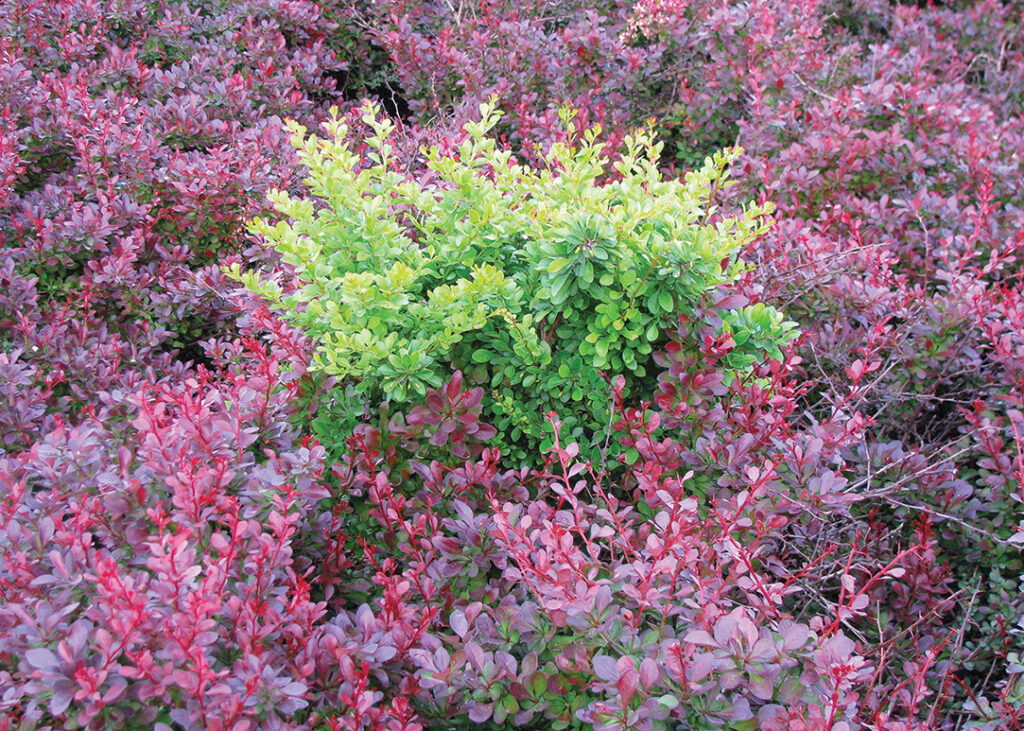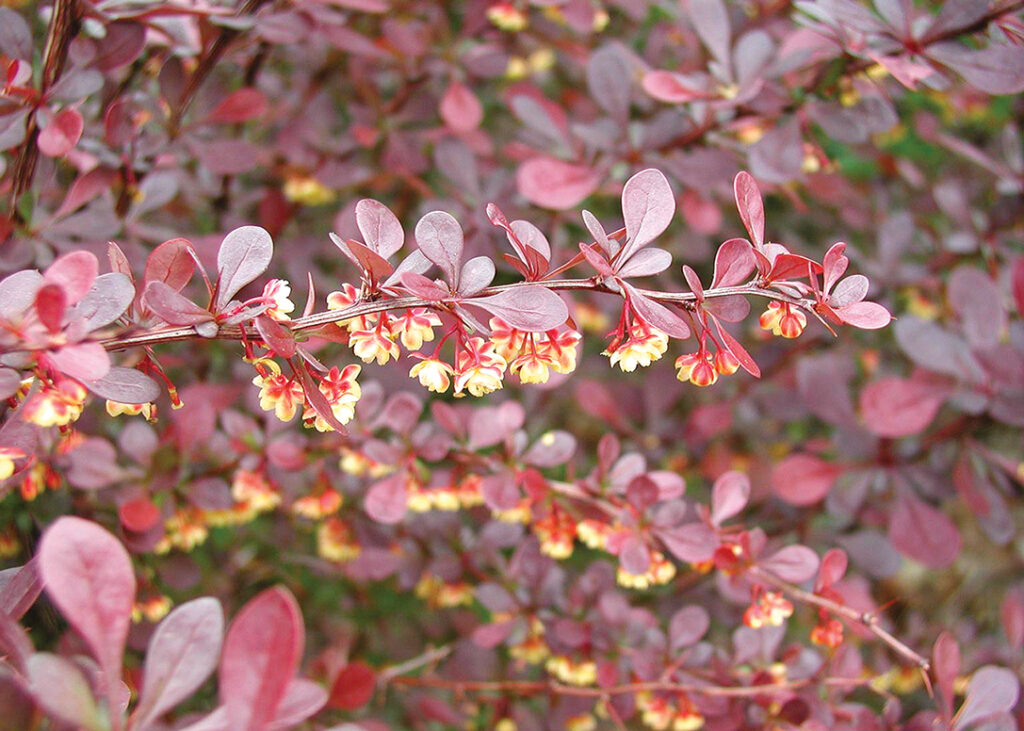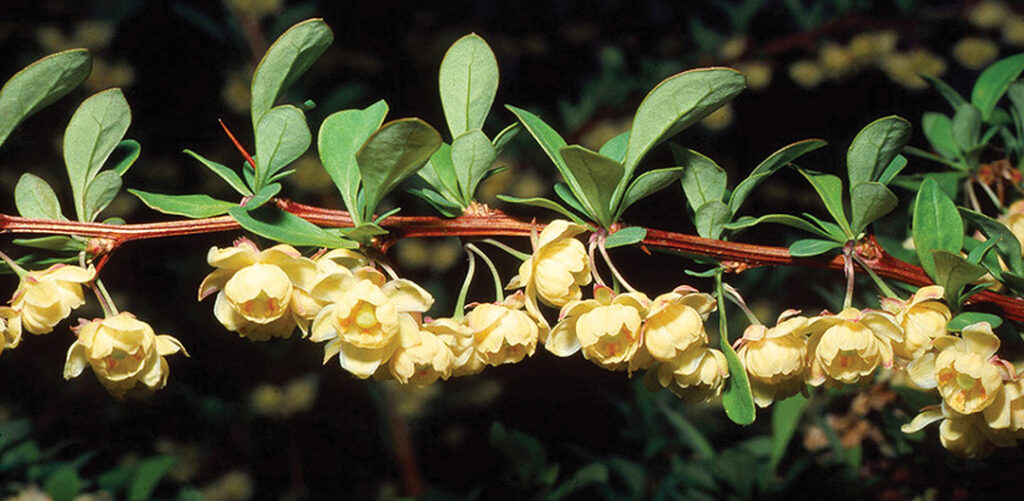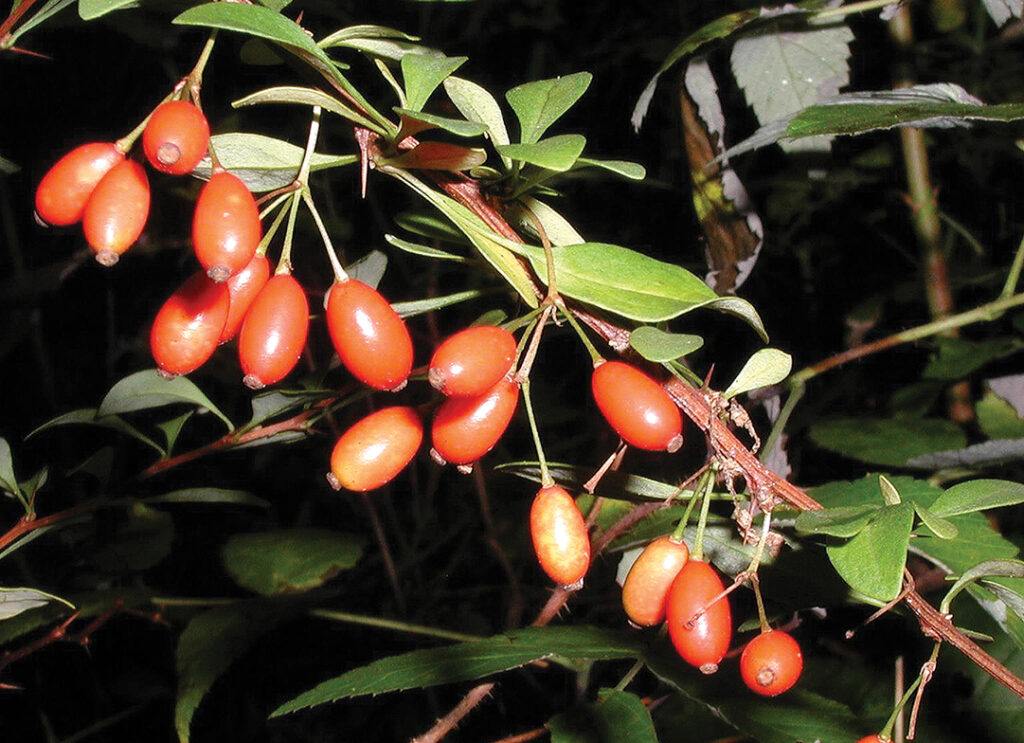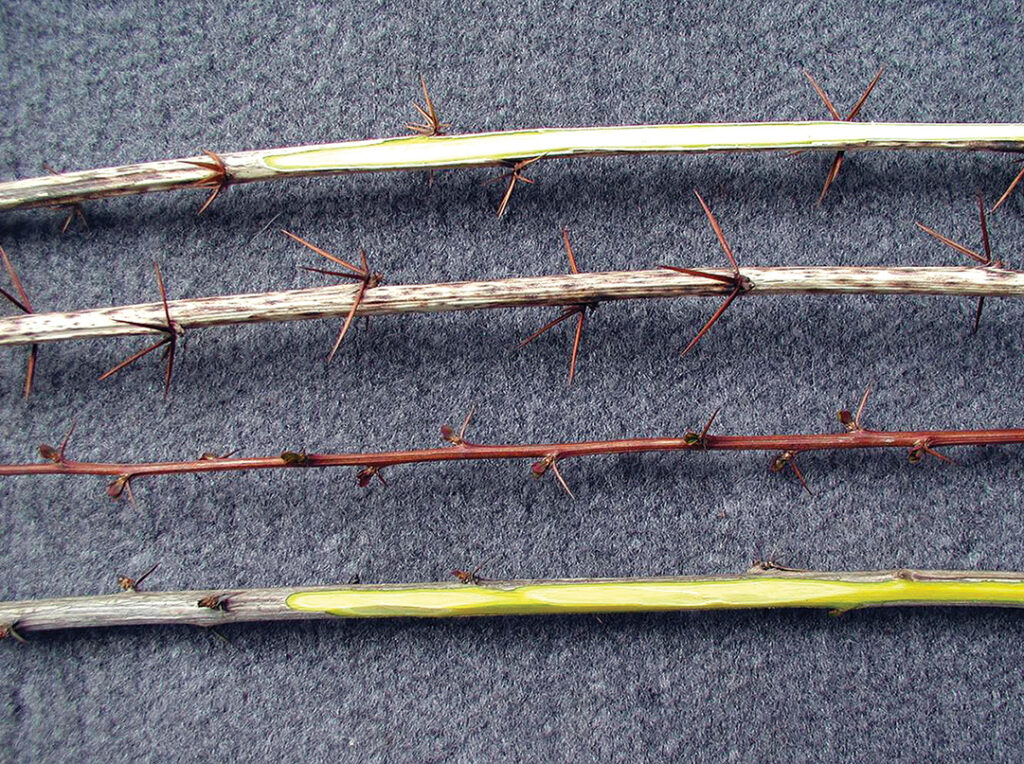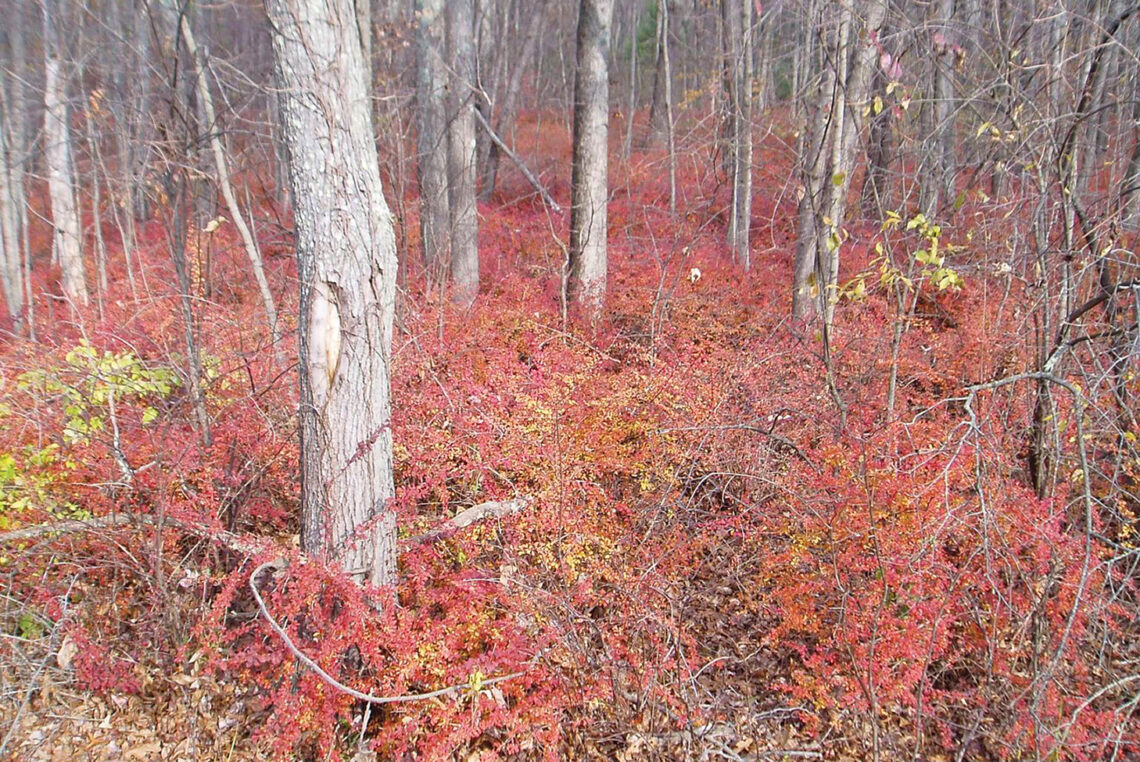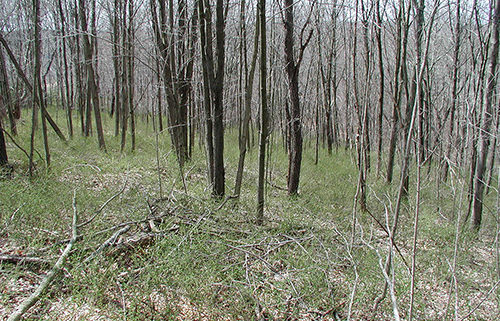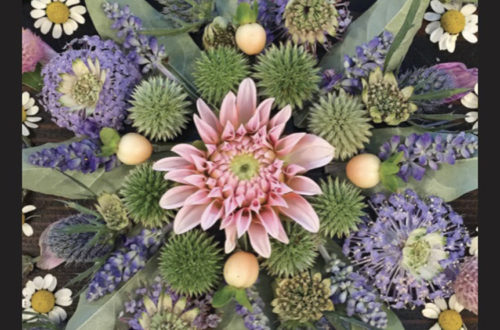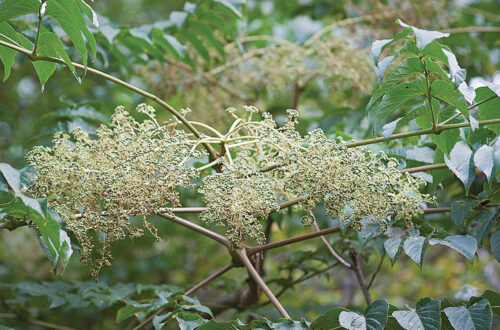Japanese Barberry (Berberis thunbergii) is a multi-stemmed deciduous shrub that flowers from April to May and fruits in late summer.
The seeds are dispersed by wildlife after they eat and digest the bright oblong red berries that often persist into winter. It can also spread vegetatively by rooting where branches touch the ground.
Native to Asia, it arrived in the U.S. in 1875 as a replacement for European or common barberry (Berberis vulgaris), which was found to be an alternate host for a rust that killed wheat and is now banned in Connecticut.
Barberry stems can grow to 7 feet and have barbed thorns. The ovate, teardrop-shaped leaves are arranged alternately and the pale yellow half-inch flowers are held in clusters on the underside of branches.
Japanese barberry forms dense thickets that take over and out-compete native flora. Infestations can even alter the chemistry and biology of soil.
The plant is highly adaptable to soil and light conditions. It’s also one of the first shrubs to leaf out in early spring.
Japanese barberry is listed as an invasive plant in many states because of its ability to invade the forest understory.
Control
Seedlings can be pulled by hand and larger plants can be dug. The roots are shallow, but wear gloves to protect against thorns. Whole plants can sometimes be removed with a hoe. Once removed, regular mowing and pulling of new stems should prevent re-establishment.
Flame weeding is another option that works well. Only flame weed when leaves are damp and wear natural fibers.
As a last resort, you can cut the plant back and paint the stump with an herbicide such as triclopyr or glyphosate.
Native Alternatives
• Bayberry (Myrica pensylvanica)
• Chokeberry (Aronia spp.)
• Highbush Blueberry (Vaccinium corymbosum)
• Inkberry (Ilex glabra)
• New Jersey Tea (Ceanothus americanus)
• Silky Dogwood (Cornus amomum)
• Summersweet (Clethra alnifolia)
• Smooth Hydrangea (Hydrangea arborescens)
• Winterberry (Ilex verticillata)
Public Health Hazard
Japanese barberry is public enemy number one when you consider its role in spreading the pathogens that cause Lyme disease and other tick-borne
diseases.
Research by Dr. Scott Williams and Dr. Jeffrey Ward at the CT Agricultural
Experiment Station (CAES) revealed that barberry-infested forests are 12 times more likely to harbor the deer ticks that carry the Lyme disease pathogen than forests without barberry.
Black-legged or deer ticks (Ixodes scapularis) like the humidity created
by thickets of barberry. Even though they’re called “deer” ticks, the pathogens they transmit originate in rodents.
White-footed mice (Peromyscus leucopus), one of the juvenile tick’s favorite hosts, also favor the habitat created by barberry infestations.
Female ticks only feed three times in their 2-3 year life span as they transition from egg to larva, nymph, adult, and lay eggs. They can become infected during any of these blood feedings but can only transmit the Lyme disease pathogen during the last two.
Juvenile ticks typically get infected with Borrelia burgdorferi, the bacterium responsible for Lyme disease, when they feed on infected rodents such as white-footed mice. These small mammals, and some birds, act as a reservoir for the pathogens that cause Lyme disease, babesiosis and anaplasmosis. Deer ticks
can also transmit the Powassan virus.
Female ticks (the ones that transmit pathogens) usually blood feed on deer, drop off, lay eggs on the forest floor and die. Ticks do not get infected from feeding on deer. For this reason, deer are only considered reproductive hosts.
Oak trees (Quercus spp.) and acorns are part of the equation because an abundance of acorns means an abundance of white-footed mice.
The Cary Institute in Millbrook, NY, is experimenting with augmenting a natural fungus as a biocontrol.
CAES is testing a non-GMO rodent-targeted oral bait vaccine that may
help prevent the transmission of the
Lyme disease pathogen.
Barberry thickets are also prime habitat for non-native earthworms.
We only have few native earthworms; repeated cycles of glaciation are responsible for that. Non-native worms eat the leaf litter (aso known as the duff layer) on the forest floor, leaving the ground bare, susceptible to erosion and unsuitable for many native wildflowers.
Even though it’s on the Invasive Plant List, Japanese barberry was never officially banned in Connecticut. The Invasive Plant Council, the body that makes these decisions, is allowed to consider many factors. Since Japanese barberry is a popular landscaping plant, we assume that economic impact was a contributing factor.
I would have thought we would want to join with Massachusetts, New York and Rhode Island in banning Japanese barberry. Alas, banning it now would be a nice gesture but that ship has already sailed.
The Connecticut Nursery & Landscape Association (CNLA) voluntarily phased out the most invasive varieties but non-member firms can still do as they please. And just because your barberry plant hasn’t spread on your property, doesn’t mean that mammals and migratory birds haven’t spread the seeds far and wide!
– Will Rowlands
